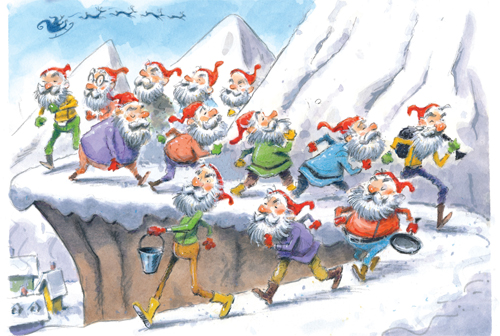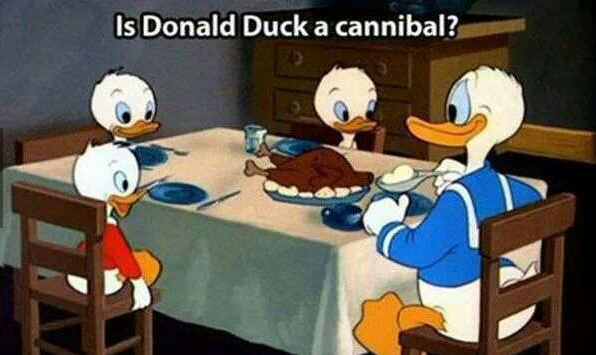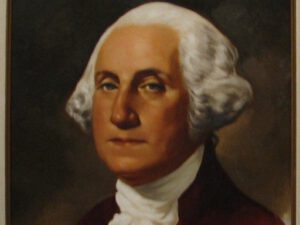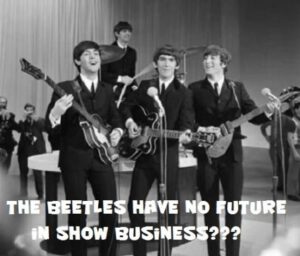21 Weird and Interesting Christmas Facts
16 There Are 13 Icelandic Santa’s Known As Yule Lads
All you parents out there who thought it was difficult convincing your children that Santa is real, and then have to try and sneak the presents out on Christmas eve should really spare a thought for the parents in Iceland. In Iceland there is a tradition of not one, but 13 figures who are symbolic of Santa. Not only are there 13 Icelandic Santa’s, but they deliver presents of some description over 13 days. The 13 Icelandic Santa’s are known as the Yule Lads.
Now, if you are thinking these Yule Lads are jolly friendly people who only spread Christmas cheer, prepare for a shock. The original Lads varied both in numbers and also from being a little mischievous to a down right homicidal criminals. Their original purpose was to scare the naughty children before Christmas. On occasions they even been depicted with the Yule Cat. The Yule Cat is a beast that will eat children who don’t receive new clothes for Christmas. If all of that didn’t strike terror into the children, the horrifying old mother of the Yule Lads surely would. Their mother is called Gryla, and she would kidnap the children who have been naughty.
In modern times the Children in Iceland will leave shoes out on a window sill for 13 days before Christmas. If a child has been good they will get a present. If a child has been misbehaving they will get a rotting potato.
The names of the 13 Icelandic Santa’s (English translation)
- Sheep-Cote Clod who has peg legs and harasses sheep.
- Gully Gawk who hides in gullies and steals milk.
- Stubby who as the name suggests is short and steals pans to eat the crust left on them.
- Spoon-Licker who is really thin and steals a type of spoon to, as the name says, lick them.
- Pot-Scraper who steals left overs from pots
- Bowl-Licker who hides under beds and tries to steal bowls.
- Door-Slammer who likes to slam doors.
- Skyr-Gobbler who likes skyr, which is a dairy product similar to yoghurt.
- Sausage-Swiper who hides in the rafters to steal sausages that are being smoked.
- Window-Peeper who is a peeping tom and will also steal what he can see.
- Doorway-Sniffer who has a big nose and great sense of small that he uses to find a type of Icelandic bread.
- Meat-Hook who uses a hook to steal meat.
- Candle-Stealer who follows children to steal their candles.
17 Mistletoe Was Use As An Aphrodisiac Throughout History
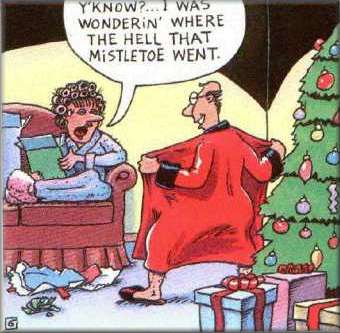 One of the most eagerly awaited Christmas traditions is the kiss under mistletoe. A lot of people hope that they will be able to steal a kiss from underneath it, and some will even carry it with them and hold over their head at an opportune time. Occasionally during the odd Christmas party the kiss may lead to other activities in the bedroom, which could have repercussions nine months later. Which brings us the origin of how kissing under mistletoe began.Mistletoe is an evergreen plant, which means it stays green all year round and won’t loose any foliage during autumn or winter. During winter it develops poisonous bright red berries. The plant was a symbol of renewal and regeneration. Druids considered mistletoe to be an aphrodisiac and would collect it from oak trees to use in the winter solstice to promote fertility. It was this pagan ritual that eventually evolved and found a place in the modern day tradition of kissing under mistletoe.During the middle ages it was hung from ceilings to ward off evil spirits and over door ways to stop witches from entering the buildings.<source>
One of the most eagerly awaited Christmas traditions is the kiss under mistletoe. A lot of people hope that they will be able to steal a kiss from underneath it, and some will even carry it with them and hold over their head at an opportune time. Occasionally during the odd Christmas party the kiss may lead to other activities in the bedroom, which could have repercussions nine months later. Which brings us the origin of how kissing under mistletoe began.Mistletoe is an evergreen plant, which means it stays green all year round and won’t loose any foliage during autumn or winter. During winter it develops poisonous bright red berries. The plant was a symbol of renewal and regeneration. Druids considered mistletoe to be an aphrodisiac and would collect it from oak trees to use in the winter solstice to promote fertility. It was this pagan ritual that eventually evolved and found a place in the modern day tradition of kissing under mistletoe.During the middle ages it was hung from ceilings to ward off evil spirits and over door ways to stop witches from entering the buildings.<source>18 What Is The Cost Of The 12 Days Of Christmas
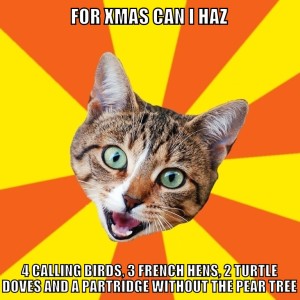 You would probably have heard the Christmas carol, the 12 Days of Christmas. In the catchy little tune one lucky person receives from an extremely generous person twelve gifts, one each day beginning with Christmas day. The 12 days of Christmas actually begin on Christmas day and ends on January 5. Many of the gifts are birds, but there are some exceedingly generous gifts such as five gold rings. Could you imagine what it would cost to buy all of those gifts? Lucky for us one organisation hoes through the trouble every year. Every year the PNC gift price index calculates the cost of each individual gift and works out the full cost of all of the 12 Days of Christmas gifts. Among the most expensive items on the list are the six swans, which cost $1,000 a piece and the eight ladies dancing who cost a collective total of $7,552.84. The cheapest item on the list is the two turtle doves which will set you back only $125.So what is the final cost? The final cost for all of the 12 Days of Christmas gifts comes to $27,393.17. Of course this total doesn’t take into account the carnage and cleaning costs, as clearly explained in the above video, but it’s as close enough to an accurate gift you will findhttps://www.youtube.com/watch?v=lbejNNCTr7k
You would probably have heard the Christmas carol, the 12 Days of Christmas. In the catchy little tune one lucky person receives from an extremely generous person twelve gifts, one each day beginning with Christmas day. The 12 days of Christmas actually begin on Christmas day and ends on January 5. Many of the gifts are birds, but there are some exceedingly generous gifts such as five gold rings. Could you imagine what it would cost to buy all of those gifts? Lucky for us one organisation hoes through the trouble every year. Every year the PNC gift price index calculates the cost of each individual gift and works out the full cost of all of the 12 Days of Christmas gifts. Among the most expensive items on the list are the six swans, which cost $1,000 a piece and the eight ladies dancing who cost a collective total of $7,552.84. The cheapest item on the list is the two turtle doves which will set you back only $125.So what is the final cost? The final cost for all of the 12 Days of Christmas gifts comes to $27,393.17. Of course this total doesn’t take into account the carnage and cleaning costs, as clearly explained in the above video, but it’s as close enough to an accurate gift you will findhttps://www.youtube.com/watch?v=lbejNNCTr7k 19 Half The Population Of Sweden Watches Donald Duck On Christmas Eve
Love him or hate him, he is rather entertaining. It’s Donald Duck we are talking about. Eternally in the shadow of his elder animated character, Mickey Mouse, he has rarely found a similar following. But at least in Sweden Donald Duck is far more popular than Mickey Mouse. To be precise, fifty percent of the population of Sweden sits down and watches Donald Duck cartoons on Christmas eve, and have done so since the early 1960’s.
It’s a particular Donald Duck show that has become a tradition in Sweden. It’s called “From All of US To All of You”, in Sweden it’s called “Donald Duck and His Friends Wish You a Merry Christmas.” The show is a montage of Disney shorts and clips from popular Disney movies. It is narrated by Bengt Feldreich, who dubbed the original English voice of Jiminy Cricket.
Of Sweden’s population of 9 million, it’s estimated that between 3 and 4.5 million people will sit down and watch the Donald Duck special that starts at 3pm every year. It is also one of the highest rated shows on Swedish television every year, only being beaten by Eurovision and major sports broadcasts.
20 WWI Had An Unofficial Christmas Truce And Football Match
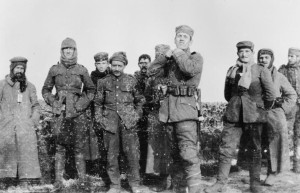
The First World War was one of the darkest chapters in the history of the human race. It saw the worlds super powers fight a four year stalemate, costing millions of lives, over old simmering tensions and rivalries. In reality, the war can be described as a big family feud, as many of the ruling royal families were descendants, or closely related to the late Queen Victoria or Great Britain. By the wars end it had once and for all seen the end of chivalry on the battlefield. But it was also the place where, amongst the death and horror of war, humanity shone through. It was on Christmas day, 1914, in the early months of the war, that the feuding, ordinary soldiers took it upon themselves to hold an unofficial truce, and meet the enemy combatants in the middle of no mans land. It was perhaps a shining example of humanity that the world leaders at the time should have heeded.
The World War 1 Christmas day truce was not sanctioned by either side of the conflict, and the military leaders especially frowned upon the actions of the frontline soldiers. Part of the propaganda in encouraging soldiers to fight was to demonise the enemy, and fraternising over a Christmas schnapps, cigars and a friendly game of football (soccer) did little to enforce this negative stereotype.
The Christmas day truce broke out all along the Western Front, and also along other fronts of the war. Along with games of football and sharing alcohol and cigars, some soldiers exchanges gifts and posed for photos with the enemy.
The celebrations ended when commanding officers ordered the shelling of no mans land. Later attempt by frontline soldiers to celebrate Christmas with the enemy were met with increasing opposition. Although there were some instances of soldiers crossing the trench lines to meet with the enemy, as the war progressed the chances of any such move grew unlikely. By Christmas 1917 the Generals had ordered the almost continuous shelling of enemy lines to prevent the Christmas cheer.
21 Jingle Bells Was Written For Thanksgiving, Not For Christmas
 How can Jingle Bells possibly be a Thanksgiving song? When you think of Christmas it’s hard not to think of Christmas carols. They invoke instant thoughts, memories and feelings of the festive season. Without a doubt, one of the most well known, and perhaps the favourite among young children is Jingle Bells. When you are singing the lyrics you can almost picture Santa himself dashing through the snow. It’s hardly possible to find a more festive and cheerful Christmas carol. But it’s not really a Christmas carol at all. The simple truth is that when Jingle Bells was written it was intended as a Thanksgiving song.
How can Jingle Bells possibly be a Thanksgiving song? When you think of Christmas it’s hard not to think of Christmas carols. They invoke instant thoughts, memories and feelings of the festive season. Without a doubt, one of the most well known, and perhaps the favourite among young children is Jingle Bells. When you are singing the lyrics you can almost picture Santa himself dashing through the snow. It’s hardly possible to find a more festive and cheerful Christmas carol. But it’s not really a Christmas carol at all. The simple truth is that when Jingle Bells was written it was intended as a Thanksgiving song.Really? Jingle Bells was a Thanksgiving song?
The composer of Jingle Bells, James Lord Pierpont wrote the song during the early 1850’s for his Boston Sunday school. The song was written to commemorate the famed Medford sleigh races held at Thanksgiving. Both children and their parents loved the song so much that the words were slightly altered a little to fit in with Christmas. The song was finally published in 1857, but it never made Pierpont, or his family wealthy. It took his nephew, John Pierpont Morgan, better known as J P Morgan to bring wealth to the family. The son of Pierpont even renewed the copyright in 1880, but it was never enforced enough to earn any significant money. The rest, as they say, is history.

